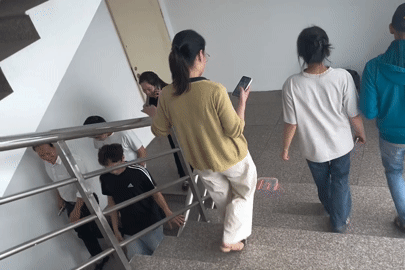


On the afternoon of March 28, a powerful earthquake measuring 7.7 on the Richter scale struck central Myanmar, sending seismic tremors that reached as far as Hanoi and Ho Chi Minh City.
The earthquake, which occurred at 1:20 p.m. local time, originated at coordinates 21.71N - 96.02E, with a focal depth of 10 kilometers. The violent tremor caused panic in Vietnam's major cities, particularly among residents in high-rise buildings.
Impact on Vietnam
According to Dr. Nguyen Xuan Anh, Director of the Institute of Geophysics, although the earthquake's epicenter was far from Vietnam, some localities, including Hanoi and Ho Chi Minh City, experienced mild effects. "Hanoi has many high-rise buildings that are more susceptible to shaking during distant earthquakes," he explained.
He noted that the impact on Hanoi and surrounding areas was minimal due to the distance from the epicenter. Nonetheless, Dr. Nguyen Xuan Anh advised residents to remain vigilant and monitor updates from authorities. The Institute of Geophysics continues to closely track the situation to ensure public safety.
A representative from the Earthquake and Tsunami Warning Center (Institute of Earth Sciences) also confirmed that the disaster risk level for Vietnam is currently assessed at level 0.
Panic in High-Rise Buildings
The tremors caused considerable alarm among residents, particularly those living in high-rise apartments in districts such as Thanh Xuan, Ha Dong, and Hai Ba Trung in Hanoi. Some reported feeling dizzy and lightheaded, mistaking the sensation for low blood pressure, while others evacuated their buildings in a state of panic.
Le Van Minh, a resident of Hoang Mai District, Hanoi, recounted the moment when his family felt the building sway. "We live on the 11th floor of a 20-story apartment building. I was sitting down when I suddenly felt lightheaded, and my whole family noticed the room shaking. It felt like vertigo," he said.
In Ho Chi Minh City, similar scenes unfolded as office workers and residents rushed out of tall buildings after feeling the tremors. Pham Duong, who works on the 15th floor of a high-rise in District 1, shared that she felt a light vibration and noticed objects shifting on her desk. "People started shouting and evacuating via the stairwell immediately," she recalled.
At the Kingdom 101 apartment complex in District 10, Hoang Vien Trung was on the 12th floor when he sensed the building quivering. "It was the first time I felt something like that - my whole body swayed, and I felt faint," he said.
Global Impact and Reactions
According to the United States Geological Survey (USGS), the earthquake occurred 16 kilometers northwest of the town of Sagaing, Myanmar, at around 12:50 p.m. local time. In addition to Vietnam, seismic waves were felt in parts of India, Thailand, and China.
In Bangkok, Thailand, warning sirens sounded in several high-rise buildings around 1:30 p.m., prompting residents and visitors to flee to the streets. Eyewitnesses reported seeing water from rooftop pools splashing out due to the violent shaking. Meanwhile, in China’s Yunnan and Shaanxi provinces, many social media users reported feeling the tremors, adding to the widespread fear and uncertainty.
The USGS indicated that seismic activity is relatively common in Myanmar due to the Sagaing Fault, which runs north to south through the country. Historical records show that between 1930 and 1956, Myanmar experienced six earthquakes measuring 7.0 or higher on the Richter scale. In 2016, a 6.8-magnitude earthquake near the ancient city of Bagan claimed three lives and caused severe structural damage to its iconic temples.
Safety Precautions and Ongoing Monitoring
Experts continue to advise residents in affected areas to remain cautious and follow guidance from local authorities. The Institute of Geophysics and the Earthquake and Tsunami Warning Center are working to provide timely updates and ensure public safety.
Although the earthquake’s impact on Vietnam was relatively mild, the suddenness of the event caused widespread anxiety among those living in high-rise buildings. This serves as a reminder to always stay prepared and informed, especially in regions susceptible to seismic activities.
N. Huyen